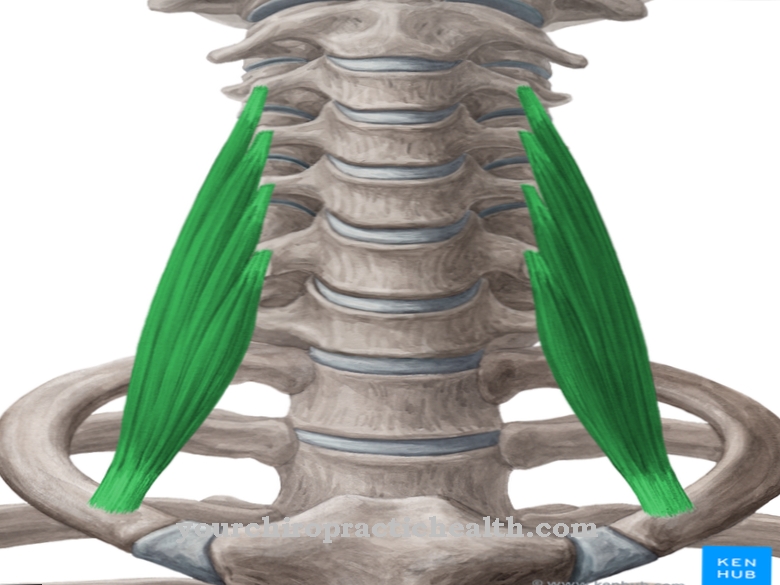Oxycodone is an opioid that is classified as a strong pain reliever. It is used to treat intense pain.
What is oxycodone?

Oxycodone is a strong analgesic that belongs to the group of opioids. Opioids are generally considered to be the most powerful and effective pain relievers. The production of oxycodone is semi-synthetic. Its effect is even stronger than that of morphine.
Oxycodone was developed in 1916 at the University of Frankfurt / Main by the German chemists Edmund Speyer (1878-1942) and Martin Freund (1863-1920), who synthesized the agent from thebaine. Just one year later, the drug came onto the market through Merck and was given the product name Eukodal®.
The drug was given to treat pain and cough. From 1919 it could also be used as a pure pain reliever. Eukodal was available in Germany until 1990, then it disappeared from the market because it was highly abuse and addictive. The first cases of oxycodone abuse had already occurred in the early 1920s and were given the name eucodalism.
Nowadays, oxycodone is sold in Germany and the USA under the product name Oxygesic® or Oxycontin®. In the Federal Republic of Germany the active substance falls under the Narcotics Act. In the USA, oxycodone was still one of the top-selling drugs until 2010. However, sales of the drug have since declined.
Since 2006, oxycodone has also been offered as a combination preparation with naloxone, an opioid antagonist, under the name Targin®. The interaction of the two substances is intended to counteract constipation, which often occurs when using opioids. It also limits improper administration.
Pharmacological effect
Oxycodone works on various opioid receptors within the brain. The drug works as an agonist and has no antagonistic properties. The pain relieving effect of oxycodone is twice as high as that of morphine. The effect comes about through the occupation of the opioid binding sites, which leads to the suppression of pain perception. Since the opioid has an additional effect on the K receptor, it is considered better tolerated than other strong painkillers. However, there is no confirmation of this effect by independent studies.
Another positive effect of oxycodone is the dampening of coughs. For this reason, the drug was used in earlier years to treat cough disorders.
When oxycodone is taken as a tablet, 60 to 85 percent of the drug enters the organism's bloodstream. It takes about an hour for the analgesic effect to set in. The effect of the agent lasts for about four hours.However, some preparations have a longer duration of effect (8 to 12 hours). The breakdown of oxycodone takes place by enzymes within the liver. The active substance escapes from the body through the kidneys.
Medical application & use
Because oxycodone has a stronger effect than morphine, it is considered one of the most powerful pain relievers ever. For this reason it is used to treat severe or very severe pain. These include neuropathic pain in which the nervous system has been severely damaged, pain caused by tumor diseases and pain in the context of bone loss (osteoporosis). The opioid can also be used as an anesthetic in surgical interventions.
It is mostly not used as a cough suppressant in Germany, as codeine and dihydrocodeine are more popular in this country.
Oxycodone is usually taken orally in the form of capsules or tablets. There is also the option of administering the active ingredient directly into a vein by intravenous injection. In the early stages of oxycodone treatment, the opioid is taken twice a day. If necessary, the dose can also be increased in the further course of therapy.
You can find your medication here
➔ Medicines for painRisks & side effects
The possible side effects of oxycodone primarily include the addiction potential of the pain reliever. There is a risk of physical dependence from taking the opioid if it is administered over a long period of time. Furthermore, it can lead to psychological dependence.
The side effects of oxycodone are similar to those of other opioids. These include headaches, constipation, nausea, vomiting, dizziness, constriction of the pupils, spasmodic bronchial constrictions, suppressed breathing, reddened skin and itching. In addition, there are chills, changes in mood, sweating, a decrease in intellectual abilities, rapid fatigue, thirst, dry mouth, difficulty swallowing, hiccups, euphoria, confusion, depression, anxiety, diarrhea, stomach discomfort, abdominal pain, decreased appetite and a drop in blood pressure in the area of the possible.
In case of hypersensitivity to oxycodone, the patient should not take the pain reliever. The same applies to severe chronic lung diseases caused by obstruction or cramping of the airways, severe impairment of respiratory function, acute intestinal problems, intestinal paralysis or an intestinal obstruction.
Oxycodone must also not be used during pregnancy and breastfeeding. This allows the opioid to penetrate the placenta and reach the unborn child. Breathing difficulties or withdrawal symptoms in the baby are also conceivable. Oxycodone may only be given to children from the age of 12 years.
The simultaneous intake of oxycodone and other drugs can cause interactions. This includes increasing the side effects of the simultaneous administration of other opioids, antidepressants, drugs for Parkinson's disease, neuroleptics, drugs for nausea and vomiting, sleeping pills, sedatives and antihistamines. Cimetidine in turn can inhibit the breakdown of oxycodone.




.jpg)










.jpg)







.jpg)




